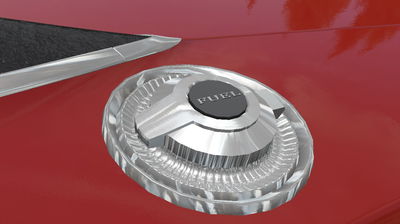Why The Skoda Karoq Is A Car I'd Genuinely Buy

A couple of months ago, I updated you on life with a 1.0-litre, three-cylinder SUV. The Kamiq is a great car with a lot going for it, but my biggest complaint was its size. Not only was it too small for all of our camera gear, the limited boot space also meant that I couldn’t fit a baby buggy in the back; our own 10-year-old Honda Jazz, by contrast, can at least accommodate that.
Fast forward a few weeks, however, and I’ve been given an upgrade from Skoda, this time in the shape of the Karoq. It’s a bigger SUV that sits - in terms of size - in between the Kamiq and range-topping Kodiaq, and first impressions are excellent.

The spec of the new car is also very different. Where the Kamiq had a 114bhp, 1.0-litre, inline triple, my new Karoq is fitted with a 148bhp, 2.0-litre inline-four TDI. And while the Kamiq sent power to the front wheels via a slick DSG gearbox, I’ve got three pedals in the larger car.
So what’s life like with the Karoq, you ask? Very good indeed, and here’s why…
1. Cargo space is King

After months of camera gear Tetris, being able to load up a car without careful planning is truly liberating. Everything fits in with ease - we have a lot of gear - as does my son’s baby buggy, which makes life far easier.
What’s more, there’s also greater headroom and legroom, while people in the back have more shoulder space, making longer journeys a doddle.
Filming out of the back of the Karoq is also better for us too; with a larger boot opening, and no electronic tailgate (more on that later), the boot lid stays fully open and gives us a wider angle from which to film out of.
2. Lots of usable power

…Or maybe I mean torque, but either way, the Karoq’s 2.0TDi makes this a car that feels fast; in fact, even Alex was surprised at the way the car accelerated, especially from low speeds.
Having the extra get up and go is a real winner for me, and what’s more, the fuel economy I’m seeing is equally impressive; after 2500 miles, I’m getting an average of 58mpg. By contrast, the smaller, petrol-powered Kamiq returned 44.5mpg.
3. It's the little things...

One of the Kamiq’s features I moaned about a lot was the fact that the heating controls were in a sub menu that you could only access via the car’s touchscreen menu. This made changing temperatures frustrating, so I’m very happy to report that the heating controls in the Karoq are physical dials that you can’t mess up…hooray!
The Karoq also has front parking sensors (the Kamiq didn’t) and while the boot lid is not electronic, this is actually a good thing for us; you see, when you film out of the back of a car at speed, the electronic boot lid usually sags to the point at which it’s covering the camera lens. With good old fashioned boot struts, however, this problem is negated. On the flip side, every time I, or anyone else wants to open the boot to get something out, we press the button and then wait for it to open by itself, which always results in a laugh from someone.
DSG vs manual

The decision to fit the Karoq we have with a manual gearbox is an odd one. A car as big as this is far better suited, I think, to an automatic gearbox, but what I will say is that having the manual means that the Karoq never feels slow.
When we used to have a Superb longtermer - also with a 2.0 TDi and DSG - our biggest gripe was how slowly it got off the line, as well as its sluggish throttle response. So perhaps it’s a blessing in disguise that our new Karoq lets us make the decisions, and not the car’s gearbox software.
In summary

After a couple of months with the Karoq, I really do love living with it. The size is ideal, I like the colour, and it’s proving very economical.
It’s a car I’d recommend to friends and family, for sure, and if this one had an auto gearbox with the aforementioned gripes fixed, would also be a car I’d think long and hard about buying, too.
Ethan Smale: Head of Production














Comments
No comments found.